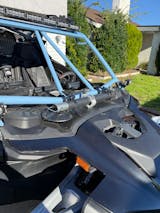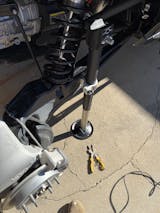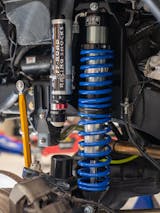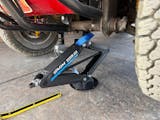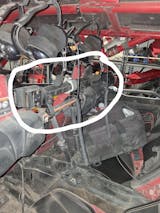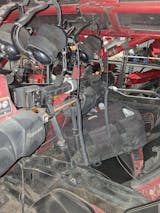Communication. No, not the type your wife wants more of. We’re talking radios. But to talk about radios we first have to understand their history. What the heck is a radio wave anyways?
As it turns out they are energy, more specifically electromagnetic radiation. Think of these as electromagnetic waves, like invisible ripples in a cosmic pond, carrying energy through space (range 30kHz-3GHz). They’re invisible because these waves are longer than optical waves (300GHz-3000THz), so the human eye cannot see them (Side note, did you know that we can only see 0.0035% of the full electromagnetic spectrum? We are basically blind to over 99% of what is out there).

These waves have the ability to travel through the air, bringing messages and music to your radio receiver at the speed of light – that's nearly 300,000 kilometers per second. (Side note - Objects in space that have changing magnetic fields, like planets and stars can create their own radio waves, that’s in part how we can see objects that are super far away from earth).
If you change the wavelengths you can go from radio waves, to microwave, to infrared, to visible, to ultraviolet, to X-ray and finally gamma. The best of which is of course the microwave. Which I use to heat many of my meals…because I can't cook.

In 1888 Heinrich Hertz was tinkering around with sparks and wires, when he unintentionally stumbled upon the discovery of radio waves. Yes it was an accident.

Fast forward to the late 19th century when Marconi, an Italian chap with a knack for gadgets, took Hertz's radio waves and thought, "Hey, let's send messages with these things!" And just like that, the first transatlantic wireless communication happened in 1901.
The first two way radios were invented in the late 1930 and had an immediate impact on communications. Now with a microphone and transmitter a user could convert their voice into radio waves and send that energy via an antenna through space to someone miles away who could receive that energy and convert it back to mechanical vibrations to hear the sender's message. Revolutionizing so many industries. Including our own.

In the early days of racing you could scribble notes on a chalkboard. Or yell at each over the sound of the engine. But neither worked when you were miles from your pit with an issue. But like all issues a resolution was just around the corner. In the 1974 Mint 400, Bob Steinburger, not only had first gen race radios in 3 vehicles, but he also sent up three weather balloons with 500 feet of coax. Creating the first radio relay. Bouncing these waves over mountain ranges and completely changing communications and safety in our sport forever.

From there, radio technology continued to improve with smaller and more powerful units for vehicles and personal use. Nowadays we have a plethora of options available to use from compact handheld units, to powerful base stations as well as complete intercom/radio kits that are plug and play. Letting us communicate with friends on a ride, answer the phone and even listen to music through that same system, as we explore trails.

There is no arguing that radios are a huge help for race teams and safety crew alike, but with the systems being so easy to install and use now there is no reason you shouldn't take a look yourself. They’re pretty cool!











